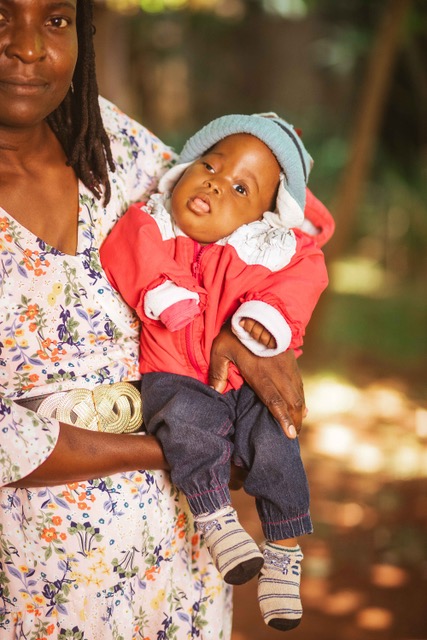
Rungamai is an adorable and beautiful 2-year-old with a unique journey. She was born with holoprosencephaly, a condition that affects brain and facial development. Join us as we peek into her world, one filled with love, resilience, and a determination to thrive. Through her, we hope to illuminate the beauty of difference, celebrate the power of inclusion, and inspire you to embrace what makes each of us unique.
What is Holoprosencephaly?
Holoprosencephaly is a rare birth defect that affects how the brain and face develop during pregnancy. Normally, the front part of the brain (called the prosencephalon) splits into two halves, forming the left and right hemispheres. In holoprosencephaly, this separation doesn’t happen completely, resulting in a brain with varying degrees of “oneness.” There are several different types of holoprosencephaly which include semilobar HPE, alobar HPE and lobar HPE. In the alobar form, there is no separation between the right and left halves at all. In semilobar HPE, at least some separation of the two halves is present and lastly in the lobar form, most of the brain has separation into right and left sides, though there is incomplete division into the two halves.
Holoprosencephaly arises during the first few weeks of the pregnancy. Diabetes in the mother during the pregnancy can increase the risk of holoprosencephaly in the foetus. However, for most children, no known intrauterine exposure is identified that is causally related to holoprosencephaly in that child. Holoprosencephaly affects males and females in equal numbers before birth.
Signs & Symptoms
HPE is associated with the following symptoms:
- Developmental delay.
- Intellectual disability.
- Epilepsy and seizures.
- Small head (microcephaly).
- Large head (macrocephaly).
- Excessive fluid in their brain (hydrocephalus).
- Facial abnormalities.
- Cleft lip and/or palate.
- Pituitary gland problems which could result in low level of sugar (hypoglycemia), low levels of sodium or genital abnormalities
- Problems regulating body temperature, heart rate and breathing.
- Feeding difficulties.
Diagnosis and Tests
Healthcare providers can often identify holoprosencephaly, especially more severe cases, before your baby is born through a prenatal ultrasound. They can also diagnose the condition pre-birth with foetal magnetic resonance imaging (MRI).
Although HPE can be diagnosed with prenatal scans, it is most frequently diagnosed at birth when facial abnormalities or neurologic issues are present. Infants with very mild forms of holoprosencephaly may not be diagnosed until they’re about one year old. In this case, developmental delays often signal a possible neurological issue, which then prompts healthcare providers to order brain imaging tests. Head Computed Tormography (CT) Scan can also be ordered to diagnose HPE.
How is holoprosencephaly treated?
There is no cure for holoprosencephaly. Instead, healthcare providers target treatment towards the specific symptom. Treatment may require the coordinated efforts of a team of specialists such as pediatricians, neurologists, endocrinologists, occupational and physical therapist and complex care team.
Some common medication given to HPE patients to lessen symptoms include anti-seizure medications to help prevent, reduce or control seizures, placing a ventriculoperitoneal (VP) shunt to reduce the build up of fluid in the child’s brain (hydrocephalus) and medication to treat pituitary gland hormone imbalances.
Conclusion
Despite the challenges, the rare disease community is full of strength, resilience and hope. Lets celebrate the incredible individuals and families fighting everyday!

This is beautiful. Keep up the good work
Together with her twin sister Ruramai,we have had an amazing 1year 6months.
We greatly appreciate the message of hope, moral and financial support we have received and continue to receive.
From managing the pregnancy upto those many theatre visits and prolonged stay in the hospital.
Special thanks goes to the medical personnel, relatives, friends and different organisations who have dedicated their time to us
as we enjoy Runga’s journey.
Dad xxx